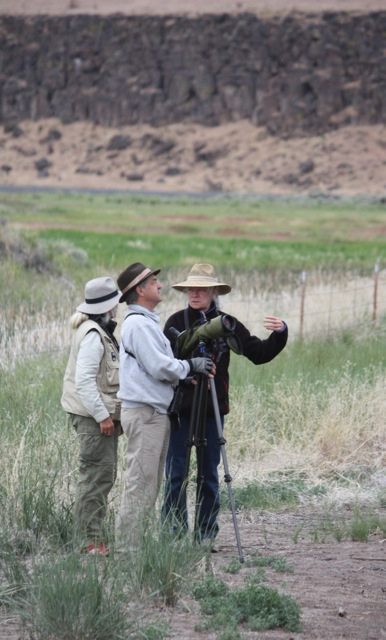Birding Oregon with GGBA
By John Tysell
I met our guide, Harry Fuller, in Ashland, Oregon where he lives. I had done a previous Golden Gate Bird Alliance trip with him in 2013 in the Cascade and Siskiyou Mountains of southern Oregon. It had been a great birding experience, so I was looking forward to spending the next three days with him on his June 2014 trip to Malheur National Wildlife Refuge.
Susan and Maureen, also GGBA members, joined us early on Wednesday morning and our car caravan headed east down Dead Indian Road. Malheur — a high desert basin in southeastern Oregon with an average elevation of 4,000 feet — is a birding hotspot. The snowpack on the Steens Mountains delivers ample water for wetlands, streams, meadows and grasslands. The varied habitat provides shelter and abundant food, especially insects. Since it is a perfect setting for breeding, I was hoping to see young at this time of the year.
As we climbed up the foothills, the trees became fir and pine. We stopped for a Lazuli Bunting and a Mountain Bluebird along the way. Near Howard Prairie Lake, we saw Sandhill Cranes in a meadow with young. A must stop was Rocky Point on the Eastern shore of Upper Klamath Lake. The highlight was a pair of Red-breasted Sapsuckers flying in and out of their cavity nest feeding babies.


Close to Fort Klamath along the Sun River, we stopped to see Ospreys with fledglings in the nest. A Bald-headed Eagle soared in the distance. At Collin’s Rest Stop, I saw my first American Dipper, one of fourteen new species I would add to my life list. Then the highlight of the day: Red Crossbills.
After leaving the town of Silver Lake, we passed a large dark-brown bird on a post. The walkie-talkie crackled. Susan observed that it was too large to be a hawk, so the caravan turned around to find a Golden Eagle. Further East in Christmas Valley, we saw Ferruginous Hawks, a Long-billed Curlew and Wilson’s Phalarope.
Late in the afternoon, we finally arrived at the Malheur Field Station on Sodhouse Road near New Princeton, Oregon. It is isolated and filled with wildlife. Our dorm was old and worn but clean. Despite the drought, the faucet leaked freely. On our way to the cafeteria, Common Nighthawks were seen sitting on the railings.
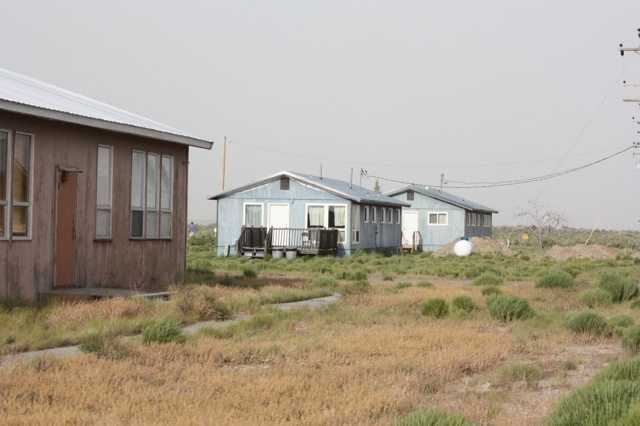
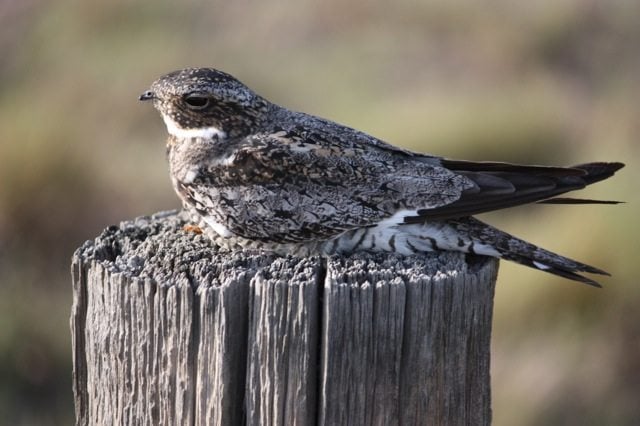
After a substantial meal, we drove to Malheur Lake, which was half its normal size. At dusk, White-faced Ibis, Great Blue Heron, and a Short-eared Owl greeted us.
The following morning, long-tailed weasels scampered among the sagebrush and least chipmunks scurried. The four of us got into Harry’s Subaru Forester and we returned to Malheur Lake, where we saw Avocets, Black-necked Stilts and Franklin Gulls. White Pelicans flew by the hundreds. It was quite a sight to see their wings flashing in the early morning sun.
Heading east, we stopped for Burrowing Owls, a Sage Thrasher, and that tiny brown bird with absolutely no field markings… a Brewers Sparrow. Two Swainson’s Hawks were fighting over a meal in a field. Past Pete French Round Barn, we enter Diamond Loop Road. Rock Wrens were airborne in Diamond Crater. We saw a Great Egret, a Wilson’s Snipe and Yellow-bellied Marmots. The distinctive squeal of the elusive Virginia Rail was heard coming from a nearby slough… the first bird to my life list based solely by sound.
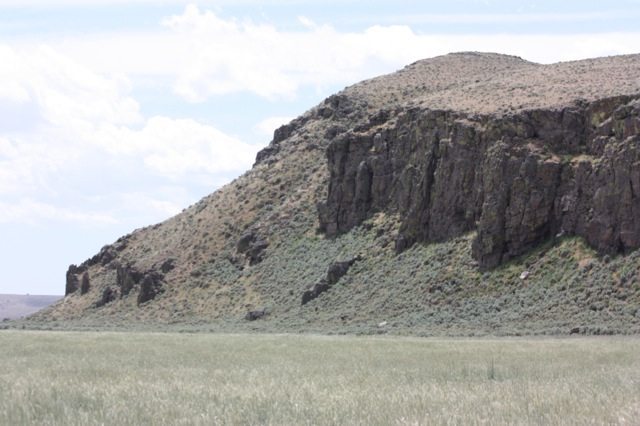
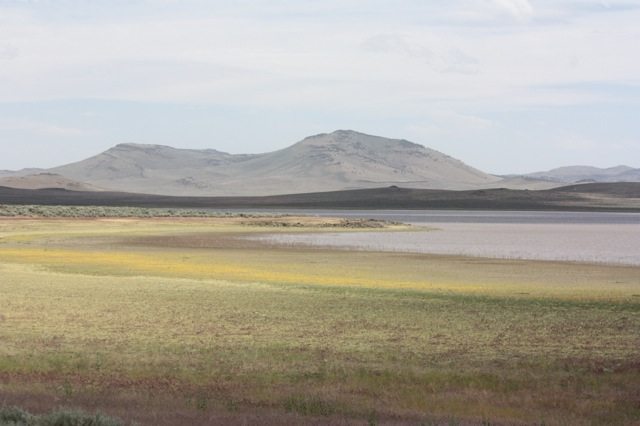
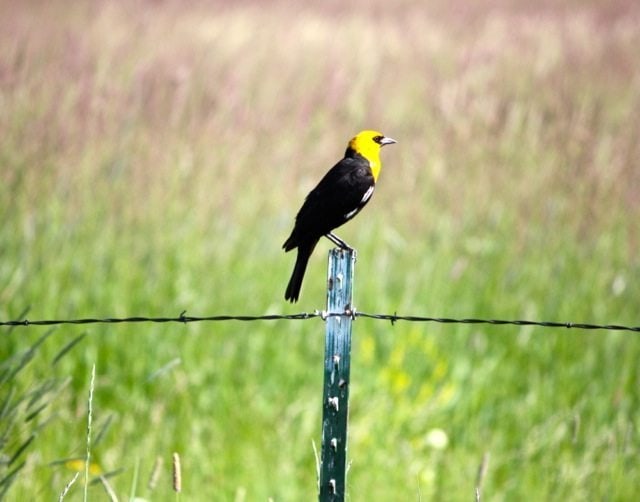
Back at the Field Station, a full moon rose over the high desert plateau illuminating an eerie landscape. It was partially eclipsed by passing clouds producing a dramatic effect.
On our final day, we headed south into a riparian environment. We birded Buena Vista Pond. Black Terns flying low in the reeds of a canal collecting insects fascinated us. A Northern Harrier was harassing something too close to its nest.
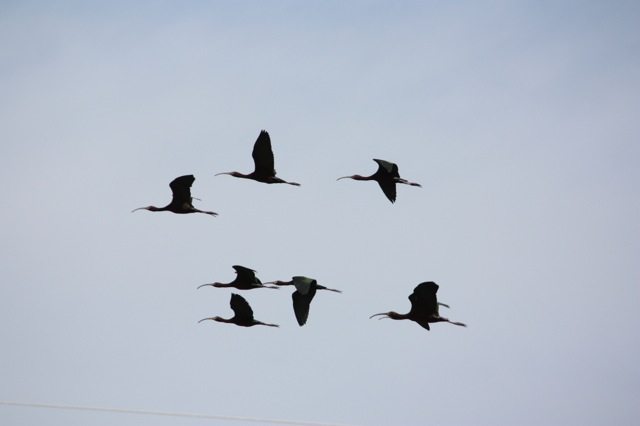

As we approached Blitzen Valley, the clouds darkened and there was a slight drizzle. Harry stopped at mile marker 44 on Hwy 205; he knew where the birds were. He trained his scope on the Basalt lava cliffs. The large yellow eyes of a Great Horned Owl starred back at me. I let out a loud “wow” — admittedly poor birding behavior — and the owl flew away.
At Benson Pond, two Trumpeter Swans were chasing off a White Pelican. When they returned, we could see why… a pair of cygnets. Western Grebes danced in the water; a Willow Flycatcher flitted among the willows along the Blitzen River.
The Frenchglen Hotel was our stop for lunch. Originally built in 1916, it still serves three meals daily and has a few rooms for birders who start arriving each April. We ate on the porch and listened as Harry told a story about the shorebird in Alaska whose nest no one was able to find. Finally a student ornithologist asked an indigenous person, who revealed that they nested at 15,000 feet.

It was after lunch on North Steens loop as we stopped for a Wilson’s Snipe in the road that we saw the bird of the trip… Bobolinks perched on a grass stem. We noted their mostly black plumage with a rich, straw-colored patch on the back of the head, the white scapulars and rump, the sharply defined black tail feathers.
At Page Springs Campground, more uncommon sightings: Violet-green Swallow, Yellow-breasted Chat, and Eastern Kingbird. We could see snow in the distant Steens Mountains. Long-billed Curlew, Horned Larks, Ring-necked Pheasant and California Quail welcomed us. A Pronghorn Antelope bounded across the gravel road.
That night Duncan and his wife visited us. They have been caretakers at Malheur for almost eighteen years. Originally from England, they enjoy the solitude and frequently lead birding excursions. We swapped additional birding tales over cold beers then crawled into our sleeping bags with the satisfied feeling of having completed a marvelous adventure.
——————————-
Harry Fuller will be leading another Oregon trip for Golden Gate Bird Alliance in May 2015, this time to the mountains of southern Oregon. See our Travel with GGBA page for information on Harry’s trip, as well as our upcoming birding tours to Panama, Colombia, Taiwan, Newfoundland, Alaska, Arizona, and Texas.
——————————-
John Tysell is a retired physician who spent 29 years at Kaiser Permanente in Richmond. He took GGBA’s Birds of the Bay Area class with Bob Lewis several years ago, and today combines his two loves of birding and photography.
